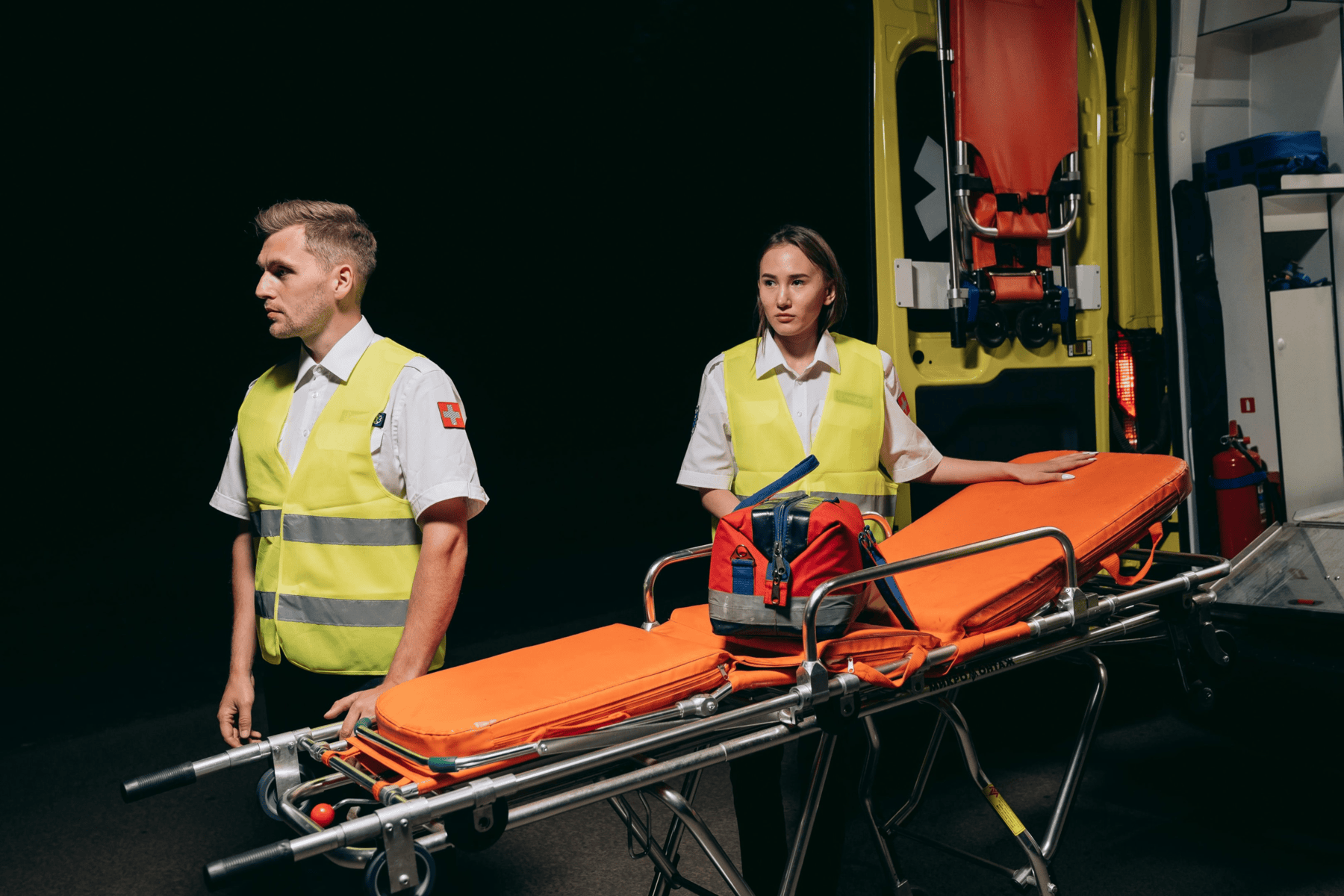Introduction
Medical facilities require NEMT to facilitate patient transfer. It aims to transport patients requiring medical attention to healthcare facilities in a comfortable way.
The choice of medical equipment is crucial and impacts overall care and comfort. The article below focuses on the two most important means of moving patients: gurneys and stretchers. It will help you understand their benefits, differences, and applications. So, let’s read below.
Understanding Gurneys and Stretchers
Let’s start with understanding the basics of stretchers and gurneys.
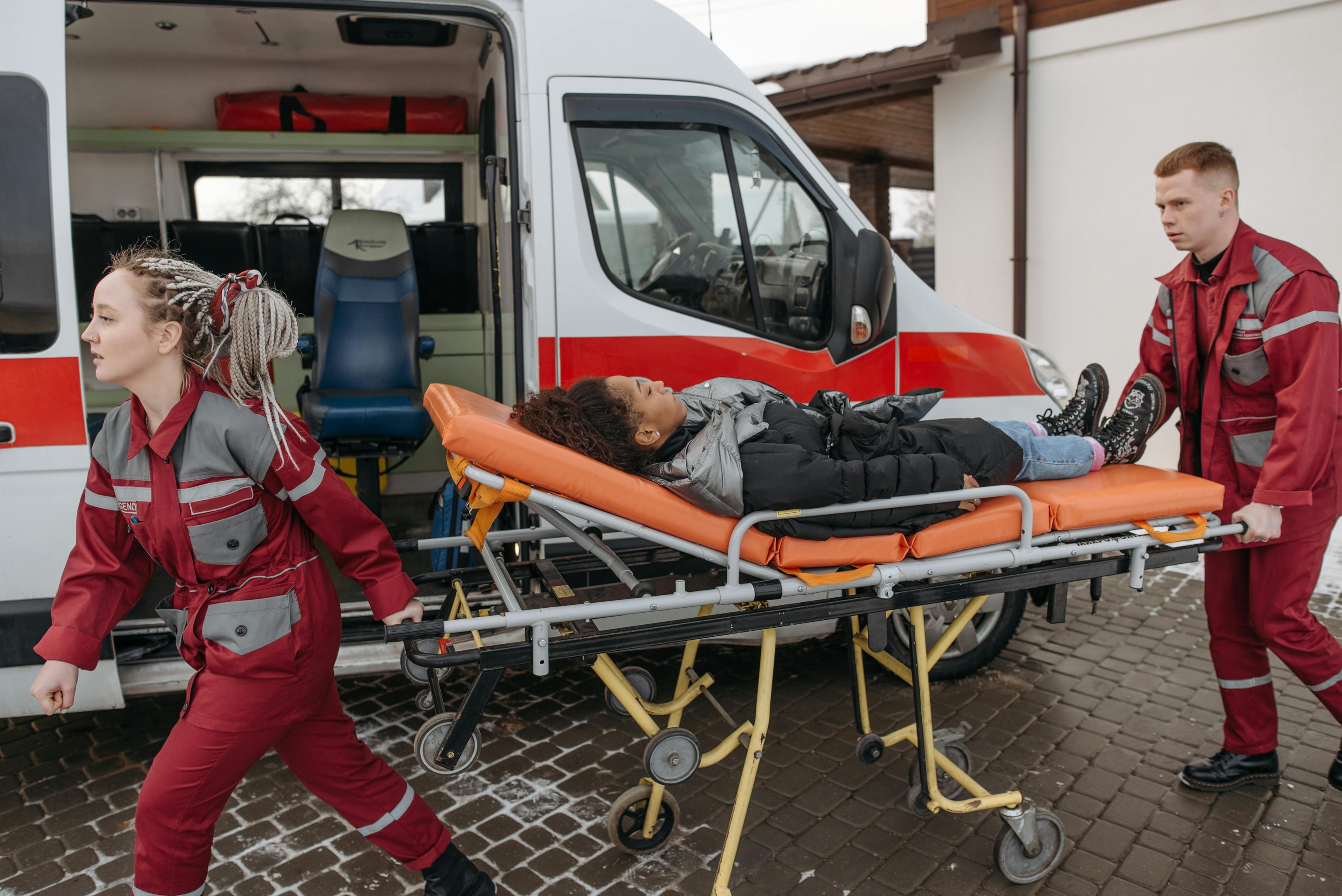
A stretcher is a type of transporting device which can carry patients by making them lie flat. These are used for patients who cannot move in emergencies. Stretchers, however, are also used in non-emergency transport of patients.
Gurneys, on the other hand, help move patients requiring medical care. These look like stretchers but have foldable legs and wheels, too. These can be moved by an individual as well, they are mobile transport devices that are used in healthcare facilities for a brief time period. It only offers to support patients while their treatment is conducted.
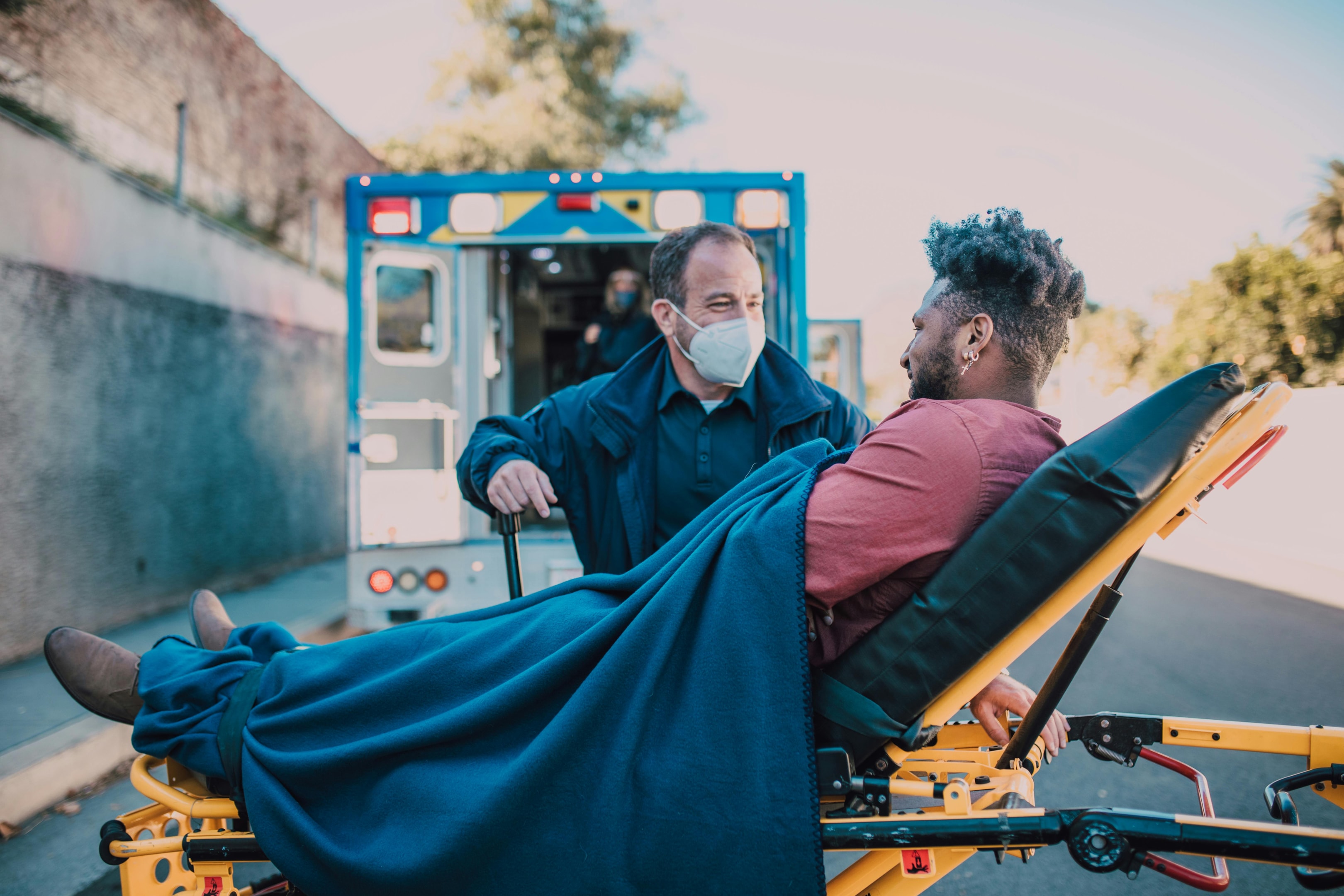
Stretchers and gurneys are used in place of one another. However, gurneys support wheeled transport, whereas stretchers are suitable for emergencies and portable movement of patients.
Types of Stretchers
The modern stretchers are of different types. Each of them is designed keeping in mind the comfort of patients while they are transported from one place to another. Some of the types of stretchers are as follows:
- Flexible Stretchers: These stretchers are also known as SKEDs. They have the support of plastic or wooden planks which help to move heavier patients through limited spaces.
- Ambulance Stretchers: An ambulance stretcher is found in the ambulances. These stretchers are manufactured using durable materials and comprise a stable structure. They also have adjustable features and safety straps which help to transfer patients securely. They are used for transporting patients between different hospitals or to the hospital from other locations.
- Collapsible Stretchers: These stretchers are lightweight and can be collapsed. They are suitable for emergency situations like search and rescue operations where immediate movement of patients is required.
- Stair Chair Stretchers: Patients who need to move over the stairs up or down require these stretchers. These are meant to handle patients on staircases in a safe way.
When to Choose a Stretcher for NEMT
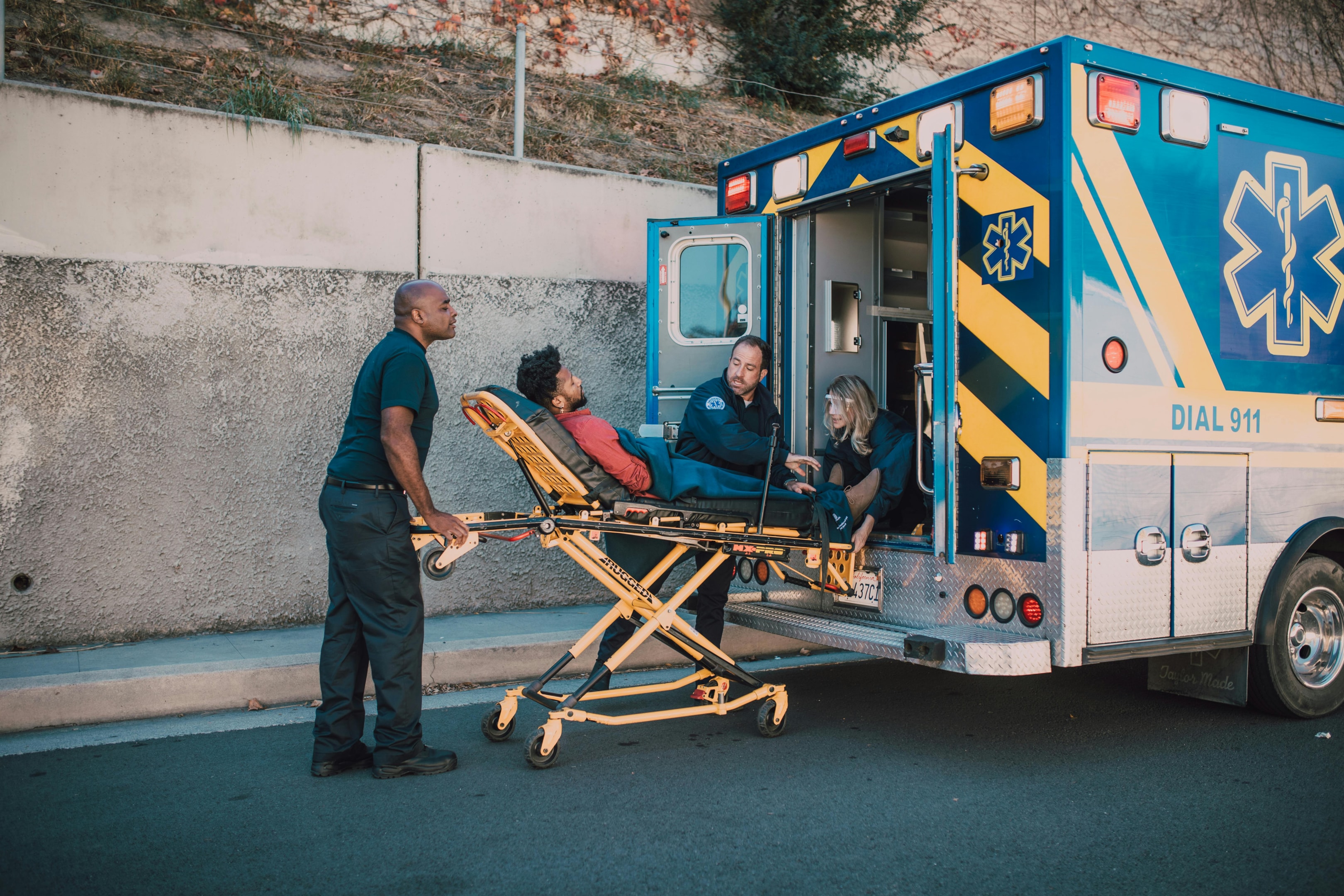
Stretchers offer to be key equipment for the NEMT industry, they are capable of ensuring a portable, adaptable, and safe transport for patients. Some of the scenarios where stretchers prove to be a suitable choice are discussed below.
- They are suitable for narrow and challenging environments like staircases, narrow hallways, or areas with limited accessibility.
- They can ideally transport patients from home to hospital, and they can be carried easily between different departments.
Scenarios:
- In rural areas, the lack of appropriate infrastructure makes them suitable due to their portability.
- The consists of handling ease which ensures navigating them in multistory buildings where narrow staircases are present with no elevator.
- They are also suitable for patients who do not need much monitoring and medical care when they are transported.
When to Choose a Gurney for NEMT
Gurneys are suitable for scenarios where adjustability, comfort, and stability are crucial for patients. Modern gurneys offer a way to support caregivers and patients for a longer time span while being transported.
Key Advantages:
- Gurneys are comfortable as they are padded and have ergonomic design, which makes them convenient for patients for a longer time of transport.
- They have adjustable headrests, which can make the patient take comfortable positions.
- They are highly stable which makes them safe for indoor transportation of patients in the hospital.
Scenarios:
When a patient requires transporting between hospitals or within the hospitals to cover a longer distance, gurneys offer commendable support.
Gurneys are flexible and have adjustable heights and other features, ensuring maximum comfort to the person who requires medical care.
Advantages and Disadvantages of Stretcher vs. Gurney
The two of these methods of transport have their pros and cons, which are key differences between them. These pros and cons are discussed below.
- Stretcher Advantages:
- It is easy to move in challenging situations and limited spaces due to its lightweight.
- The folding stretcher has a compact layout. It requires limited storage space.
- It is easy to use and affordable.
- Stretcher Disadvantages:
- The stretcher is not suitable for prolonged use as it lacks comfort.
- It doesn’t have adjustable features like reclining heights and headrests, which makes them uncomfortable.
- Gurney Advantages:
- Modern gurneys offer versatile adjustments for positioning patients by reclining features and height adjustments.
- Padded designs make them comfortable for patients when they have to spend more time on them.
- They can also accommodate medical monitoring if required.
- Gurney Disadvantages:
- It is not suitable for use in limited spaces and is bulky.
- It needs more space for storage.
- It requires a high initial investment, also it is expensive to maintain.
Safety Precautions and Best Practices
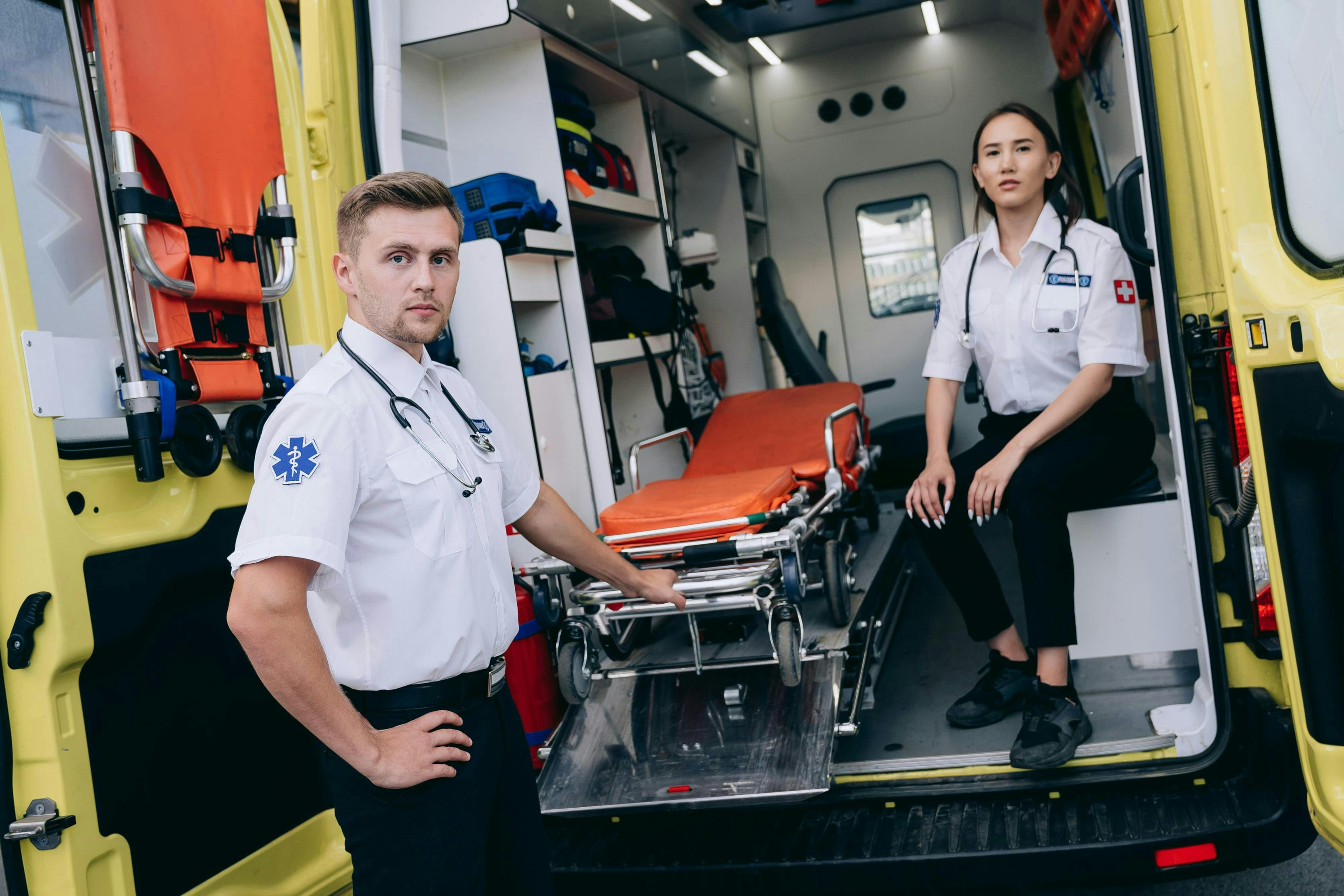
Some guidelines can help you ensure the safe transport of patients on gurneys during non-emergency medical transportation. Some of the important guidelines are given below.
- Read the guidelines by manufacturers so that the gurneys are used properly protecting drivers from injuries while transporting patients.
- Gurneys that have locks and side rails are safe, and they can keep the patients secure while transporting them. Make sure to lock those side rails and ensure that the working conditions of the gurneys are good.
- To avoid accidents, make sure to communicate with one another while the patient is being lifted, and keep the communication clear. It is suggested to have two or more people lift the patient on the gurney for safety.
Cost and Logistics
Gurneys have added comfort and features that make them expensive. They require a high initial investment and maintenance. However, they offer to be a suitable method for transporting patients safely.
Stretchers offer portability and can be stored easily. They do not provide the same safety and comfort as gurneys but are affordable and require minimal maintenance.
NEMT providers must weigh the benefits and costs to choose a relevant option when deciding between a stretcher and a gurney for patient transport.
Conclusion
When selecting between a stretcher and a gurney, patient comfort is prioritized to ensure they are carefully moved from one location to another. As the guide above has offered a detailed difference between stretchers and gurneys, NEMT providers can choose the right type of transport method.
Moreover, following the best practices while transporting patients is also crucial so that the risk of injuries and accidents is prevented.
How JIEKANG Can Help You?
If you are looking to have the right NEMT fleet, you can contact us, and we will offer you high-quality, durable, and flexible stretchers and gurneys. Get in touch with and learn about the different models we offer so that you can comfortably transpo

